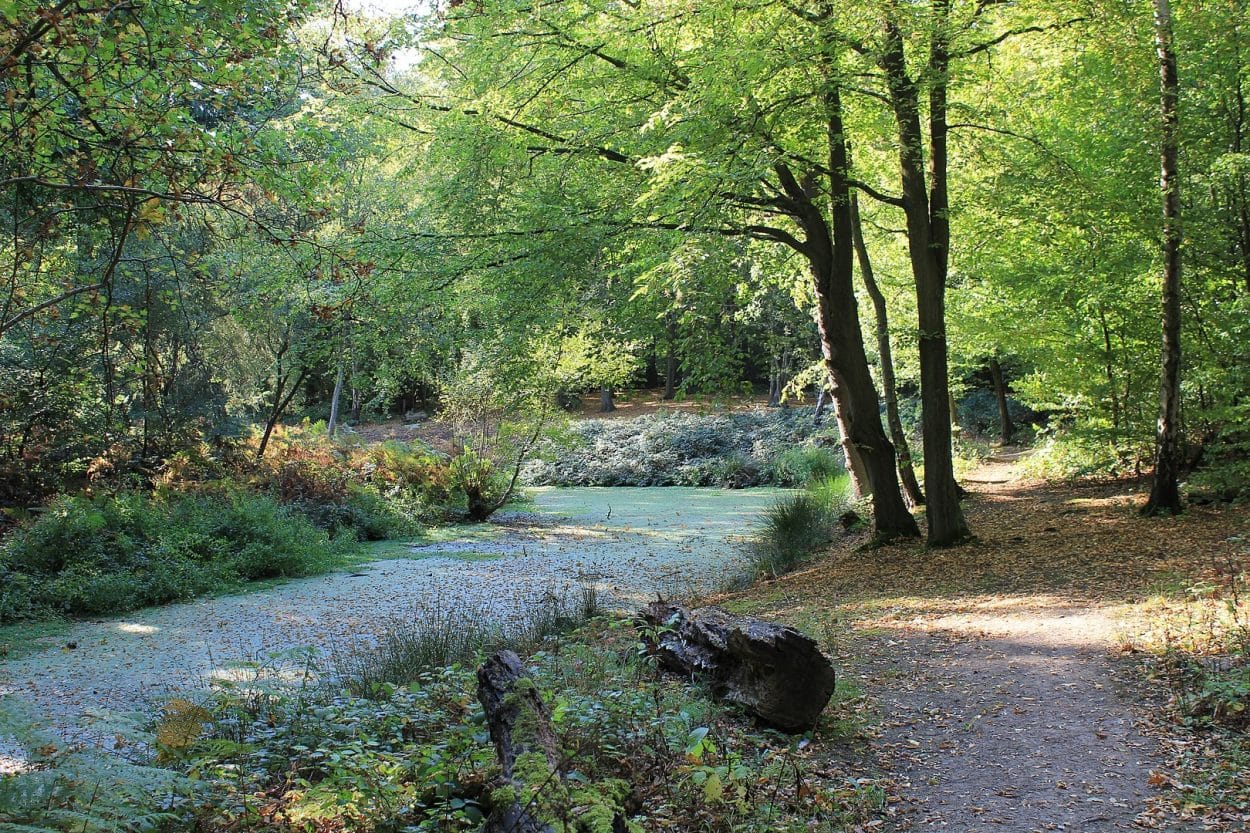Camlet Moat is a quadrangular moated enclosure monument known as ‘London’s Camelot’ near the summit of Ferny Hill, located in the Trent Country Park in the London Borough of Barnet.
According to myth, Camelot was the seat of King Arthur’s court, who himself was a legendary figure first mentioned in the 12th century poem ‘Lancelot, the Knight of the Cart’ by Chrétien de Troyes.
During the 15th century, Arthur and Camelot was popularised by Sir Thomas Malory’s ‘Le Morte d’Arthur’, in which Malory compiled and reworked tales along with the respective folklore in order to tell a ‘complete’ story of Arthur from his conception to his death.
Most scholars regard Camelot as being entirely fictional, its unspecified geography being perfect for chivalric romance writers, however, over the centuries many sites across Britain have been proposed as possible contenders for the seat of Arthur’s rule.
The connection to Camlet Moat as one such contender stems from an account in 1440, where a house called ‘the manor of Camelot’ was apparently demolished in Enfield Chase, and sale of its materials was used to pay for repairs at Hertford Castle.
‘Camlet’ is thought to have been corrupted through the passage of time from the word ‘Camelot’, for which one theory suggests has stemmed from a 14th century stonemason who worked on the round table building at Windsor for Edward III. Ramsey owned property in Enfield, and whilst working on a building on the Moat light-heartedly called it ‘Camelot’.

It is thought that the first structures at the Moat were built by Sir Geoffrey de Mandeville, the 1st Earl of Essex and Constable to The Tower of London, who owned land in the area during the 12th century. Geoffrey rose to prominence during the reign of King Stephen as a rebel, but would later die whilst attacking Burwell Castle and was subsequently buried in Temple Church in London.
To the north-east corner of the Moat is a deep crater, believed to be the remnants of an ancient well. Legend has it, that under the paved bottom is a hidden chest of treasure, guarded by the ghost of Geoffrey de Mandeville.
By the 14th century, the Moat was owned by Humphrey de Bohun, 6th Earl of Hereford and 5th Earl of Essex (a descendant of the de Mandeville’s). The purpose of the site during this time is debated, but it has been suggested that Camlet Moat was the quarters for the Head Forester of Enfield Chase, or was a hunting lodge as the Chase was a royal hunting forest.
Two amateur excavations have been carried out at Camlet Moat, with the first during the 1880’s that had fanciful claims of discovering a ‘whole dungeon with a chain attached to a wall’, timbers from the drawbridge ‘now turned black as ebony’ and ‘glazed tiles adorned with knights on horseback’ (all of which have vanished, with the only details of the excavation in the autobiography of Nesta Helen Webster, published in 1949).
The second was in 1923 by Sir Philip Albert Gustave David Sassoon, 3rd Baronet, who claimed he uncovered one-foot square oak beams from the drawbridge, a large wall of stone and flint some forty feet long and evidence of the old Manor House (none of which remains on ground level).
No further archaeological works have been conducted to substantiate the claims of the previous excavations, however, in 1997, Historic England came to a management agreement with Enfield Council to restore Camlet Moat after years of neglect. Whilst desilting work was carried in the Moat, a surviving fragment of the drawbridge was discovered; the remains of a pegged tenon joint which has been dated to around 1357.
Header Image: Camlet Moat – Image Credit : James Cridland – CC BY 3.0







